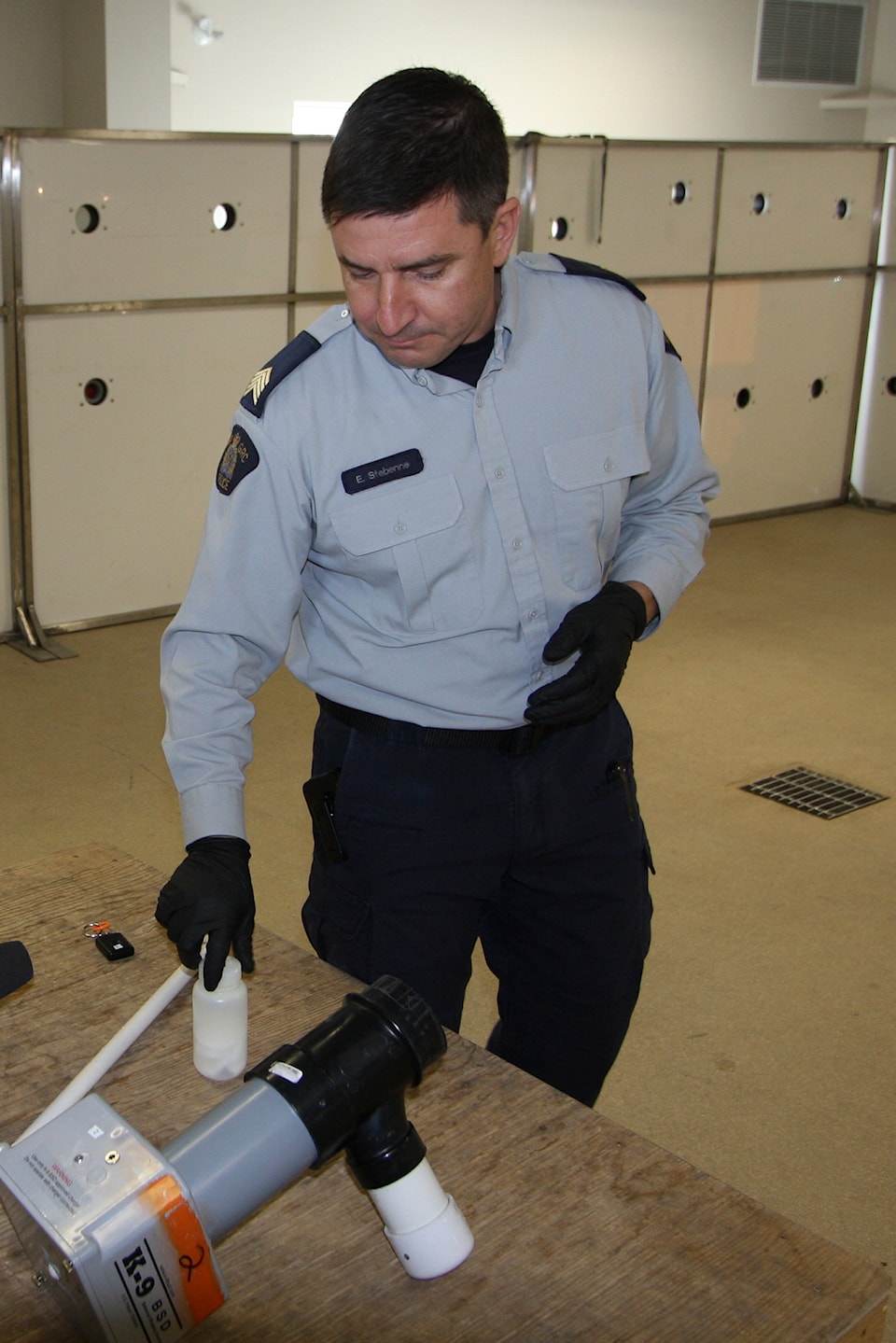RCMP’s world-leading dog training centre near Innisfail is tackling the fentanyl scourge.
Police dogs are being trained to use their incredible sniffing powers to root out fentanyl, an opioid 100 times more toxic than morphine.
“It’s going to save lives,” says Insp. Akrum Ghadban, officer in charge of the RCMP Police Dog Service Training Centre. “The more fentanyl we can take off the street the more lives we’ll save.”
All 139 RCMP narcotics-profile dog teams are expected to be trained to detect the deadly drug by mid-July.
The initiative has already paid off. One of three dog teams already trained intercepted 12,000 fentanyl tablets in B.C., said Ghadban, during a demonstration of the dogs’ abilities at the training centre on Friday.
It is not uncommon for fentanyl to be mixed in with other drugs such as heroin. While narcotics dogs could detect the heroin, before this new training they could not tell if fentanyl was present.
The undetected fentanyl was not only dangerous to the end human customer, it put the dog teams in danger.
“It’s an odour that was unfamiliar to them so they would just keep inhaling and sniffing, which would put them at risk,” he said.
Training the dogs to find such a dangerous drug — three grains can kill a person — carried its own challenges.
The dog service enlisted the help of specialists in RCMP labs in B.C. and Alberta to create a diluted form of fentanyl that can be used for training.
“They’re the experts on fentanyl. We’re the experts on dogs,” he said.
Once trained to detect the much-diluted version of fentanyl dogs will be able to easily sniff it out the street form of the drug from a safe distance when on the job.
To train the dogs an enclosure lined with holes is used. Drugs are placed in a tube along with a reward for the dogs. When the drug is found, the reward “pod” is jettisoned to the happy dog.
Cpl. Buzz Whalen, who is responsible for training eight-week-old puppy candidates until they are ready for the next step, says this system of training has been hugely successful.
“To do this training when I first started took three weeks to a month. We’ve cut that down to three or four days.”
One of the advantages of the cubbyhole setup is that dogs are more focused than when they turn to their handlers for rewards.
“It’s a self-reward system,” he said, adding the dogs don’t know their trainer is behind the reward.
When the dogs detect a drug they remain still staring at the spot, undistracted.
What the RCMP are accomplishing with their dog teams on the fentanyl front leads the world. Their work has not gone unnoticed by other police departments.
“The calls have started,” said Ghadban. “We’re expecting after this week our phones will be ringing off the hook.”
pcowley@www.reddeeradvocate.com
